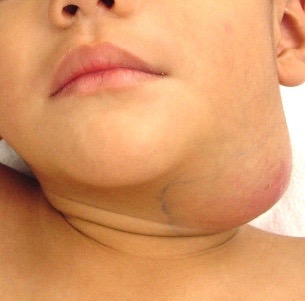INFECTIOUS DISEASE OF THE HEAD AND NECK

Some of the most common operations performed in Otolaryngology are performed for infectious processes. Most infections in the head and neck are not serious, and can be managed on an outpatient basis. For example, pressure equalization tubes (PE tubes) are placed in adults and children with chronic ear infections, while tonsillectomy is done for recurrent or chronic tonsillitis. Endoscopic sinus surgery is an option for patients with chronic sinusitis that is not responding to conventional medical therapy.
There are some serious infections in the head and neck that will require hospitalization. A deep neck cellulitis or phlegmon is a soft tissue infection involving the fat, muscles, or potential spaces in the neck. Usually, the patient is hospitalized for treatment with intravenous antibiotics and pain medicine. Many patients will improve with antibiotics, but some infections will progress to an abscess. An abscess is when an infection isolates itself into a ball of infected fluid or pus. Because antibotics do not penetrate well into abscess cavities, abscesses require surgical drainage, followed by intravenous antibiotics. Abscesses in certain areas can be life threatening and should not be taken lightly.
Acute mastoiditis is an infection of the mastoid bone, which is located behind the ear. It is a complication of an acute otitis media (middle ear infection). It is characterized by ear pain, fever, and redness or swelling to the mastoid region. Often, the ear is protruding forward because of the swelling. Patients are treated with intravenous antibiotics, and sometimes placement of a pressure equalization tube (PE tube) or surgical mastoidectomy.
